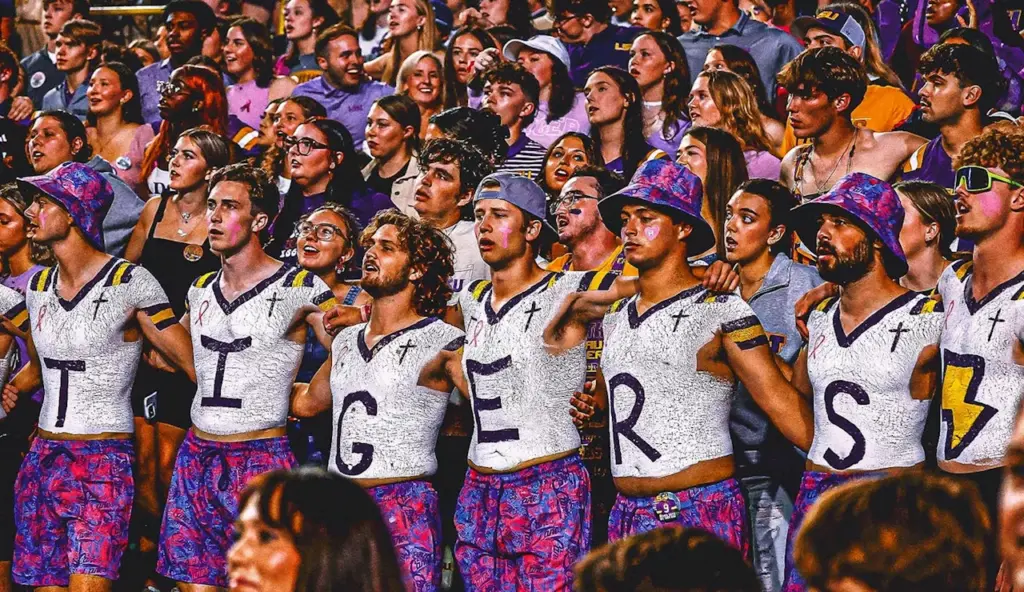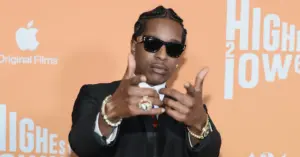
College football stadiums have transformed into vibrant arenas where music plays a crucial role in energizing fans. Traditional pep bands and fight songs remain, but a new wave of stadium anthems has taken center stage, with artists like Garth Brooks, The Killers, and Tom Petty leading the charge. Their songs are now integral to the atmosphere at major universities across the United States.
One of the most notable examples is Brooks’ rendition of “Callin’ Baton Rouge.” Originally recorded by New Grass Revival, Brooks aimed for a sound that would inspire excitement in stadiums. “We recorded the song to be played in stadiums and arenas, with one lone purpose… Get people fired up!” Brooks explained. At LSU’s Tiger Stadium, fans erupt with enthusiasm, chanting “LOUISIANA!” when the song mentions the state. Brooks noted, “CBR at LSU seems more like a war cry than a tradition. I get goosebumps every time I hear them sing it.”
The influence of music in college football has expanded significantly in recent years. While traditional fight songs still hold their place, schools are increasingly incorporating modern anthems that resonate with their student bodies. For example, House of Pain’s “Jump Around” has been a staple at Wisconsin games for over twenty years, energizing fans to jump in unison. Similarly, “Mr. Brightside” by The Killers has become synonymous with the University of Michigan, engaging students and alumni alike.
Modern Anthems Reshape Game Day Experience
Various genres of music find their way into college football, from rock to country and hip hop. Each school adopts specific tracks that define their game day experience. At Florida, “I Won’t Back Down” by Tom Petty, a native of Gainesville, resonates deeply with fans. The iconic “Sandstorm” at South Carolina and “Dixieland Delight” at Alabama are additional examples of how music fosters a sense of community among fans.
One strategic moment for musical crescendos is during the break before the fourth quarter. This timing serves to maintain the excitement and keep fans engaged, especially when a team is leading. Jake Stocker, director of game presentation at Michigan, explained, “If you do ‘Brightside’ that first break in the third quarter, it’s done and people are leaving.” By moving “Mr. Brightside” to the third and fourth-quarter breaks, the school establishes a tradition that encourages fans to stay in their seats longer.
The Power of Music to Unite Fans
The tradition at Wisconsin began in 1998, when tight end Ryan Sondrup proposed incorporating “Jump Around” into the game day experience. After discussing ideas with friends and teammates at a sports bar, he suggested playing the song during key moments to energize the crowd. Initially met with skepticism from older fans, the practice quickly became a beloved tradition that resonates with the entire state. “It’s all-encompassing of all people in Wisconsin. Everyone knows ‘Jump Around,'” said defensive tackle Erik Waisanen.
While some songs may not have direct ties to a school’s history, their impact is undeniable. Brooks, who attended Oklahoma State, has also created a connection with his fans through his music. He noted his desire to write a song specifically for his alma mater, stating, “I am in the middle of recording a song I would love to pitch to them to start playing if the song turns out the way I hope it does. It’s called ‘COWBOY BLOOD.’ The lyric fits the cowboy life and the music was recorded to fire people up.”
As college football continues to evolve, the role of music at games remains pivotal in creating a spirited atmosphere. The combination of modern anthems and traditional fight songs not only enhances the game day experience but also strengthens the bond between fans and their teams. As Brooks and other artists contribute to this cultural phenomenon, their music becomes a crucial part of the unique identity of college football.






